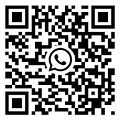Hotline
+86-136 8495 9862
Email:cennia@szmizhi.com
Add::104,Building 27,Third Industrial Zone, Longxi Community,Longgang District,Shenzhen,China.
Coil Forming & Handling Equipment
Surface Treatment Equipment
Solutions
Application
About Us

Welcome to MIZHI
For consultation/feedback, please call the service hotline: +86-136 8495 9862 Email:cennia@szmizhi.com

A remote-controlled blasting machine offers unparalleled safety and convenience by allowing operators to trigger explosions from a distance, minimizing exposure to hazardous environments. This technology is particularly critical in scenarios where immediate proximity to the blast site poses risks, such as in mining areas with unstable rock formations, demolition of structurally compromised buildings, or operations in toxic or radioactive zones. The remote control system typically consists of a transmitter unit (held by the operator) and a receiver unit integrated into the blasting machine, communicating via secure radio frequencies or infrared signals.
The design of remote-controlled blasting machines prioritizes reliability and signal security. To prevent accidental activation, most systems require multiple authentication steps, such as dual-button presses or password entry on the transmitter. Signal encryption ensures that only authorized commands are received, eliminating the risk of interference from external sources. Additionally, fail-safe mechanisms like automatic signal timeout (which disables the receiver if communication is lost) and emergency stop functions enhance safety. The range of remote control varies depending on the model, with some systems capable of operating from several kilometers away, allowing operators to take shelter in secure locations before initiating the blast.
Remote-controlled blasting also improves operational flexibility. For example, in underwater blasting or mountainous mining sites, operators can position themselves in vantage points to monitor the blast while triggering it remotely, ensuring better control over the process. Maintenance is simplified as technicians can diagnose issues from a safe distance, reducing downtime. As wireless technology evolves, modern systems may incorporate real-time video feeds or sensor data transmission, enabling operators to assess conditions at the blast site before activating the machine. This combination of safety, precision, and adaptability has made remote-controlled blasting machines essential in high-risk industries where human presence near explosives is too dangerous.